Geoffrey Holder: Prismatic Blackness
Authors
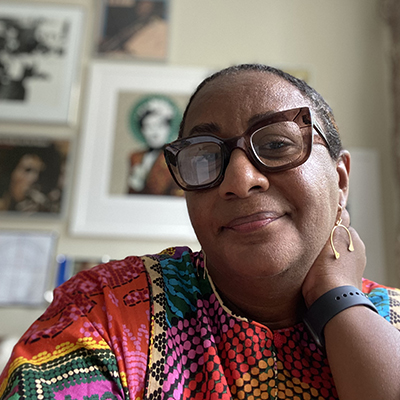
Erica Moiah James, PhD. is the Principal Investigator and publication editor for the Geoffrey Holder Project. She is an Art Historian, Curator and Assistant Professor currently based at The University of Miami. Before arriving in Miami, she was the founding director and chief curator of the National Gallery of The Bahamas and taught at Yale University. Her work centers on indigenous, modern and contemporary art of the Caribbean, Americas and the African Diaspora. Select publications include Charles White’s J’Accuse! and the Limits of Universal Blackness (AAAJ, 2016); Every N***r is a Star: Re-imaging Blackness from Post Civil Rights America to the Post-Independence Caribbean (Black Camera, 2016), Decolonizing Time: Nineteenth Century Haitian Portraiture and the Critique of Anachronism in Caribbean Art (NKA, 2019); The Black Sublime: Rene Pena’s Archangel, 2018 (SX 2019); Ricardo Brey’s Adrift(MER, B&L, 2019); and the book chapters “La luz de cosas” on the artist Juan Francisco Elso (N.A.M.E., 2022) and “Gust of Grace: Simone Leigh’s Las Meninas, 2019” (CMA and Yale UP, 2022). She will curate the exhibition Didier William: Pictorial Moves of Revolution for the Museum of Contemporary Art North Miami in 2022 and her forthcoming book is entitled After Caliban: Caribbean Art in the Global Imaginary.
Introduction – Geoffrey Holder: Prismatic Blackness
Chapter 3 – If Shango was a Woman: Geoffrey Holder and the Black Female Nude, 1965-1980
Interlude 1 – Geoffrey Holder: Artist and Collector – Photo Essay
Interlude 2 – Expressive Awesomeness, Geoffrey Holder’s Costume Designs for the Stage – Photo essay
Interlude 3 – Geoffrey and Carmen’s Art – Photo Essay
Interlude 4 – The Holder Archive Holdings – Photo Essay

Marsha Pearce is a scholar, educator and curator based in Trinidad and Tobago. She holds a BA in visual arts and a PhD in cultural studies. Dr. Pearce is a lecturer in Visual Arts at the Department of Creative and Festival Arts, and Deputy Dean of Distance and Outreach, at the University of the West Indies, St Augustine Campus. She has worked as the senior editor and art writer for ARC Caribbean Art and Culture Magazine and is a consulting art editor for Moko Caribbean Arts and Letters Magazine. She has also served on the board of the National Museum and Art Gallery of Trinidad and Tobago. Her research and critical writings about visual culture have been published in several art catalogues as well as peer-reviewed academic journals and books. Her public scholarship includes a collaboration with the National Portrait Gallery London and the British Council for the Americas IN Britain—Caribbean Edition curated online exhibition project, and her work with the Pérez Art Museum Miami to co-curate the group show The Other Side of Now: Foresight in Contemporary Caribbean Art. In the midst of the coronavirus pandemic, she led an artist conversation series titled Quarantine and Art (Q&A).
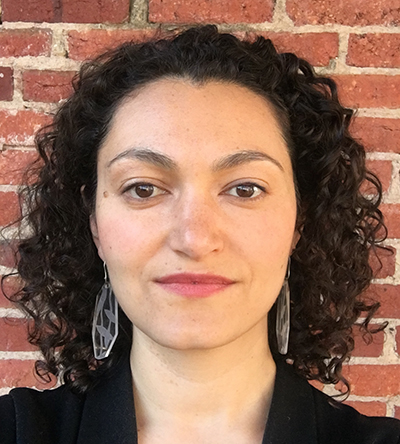
Tess Korobkin is assistant professor of American art at the University of Maryland, College Park. Her research interests include histories of sculpture, the politics of materiality and intermediality, and representations of race and violence in American modernism. Her current book project, What’s the Matter with Sculpture?: Monumentality and Photography in the 1930s interrogates the form and politics of figurative sculpture in an era of social upheaval, emergent modernisms, and the rise of documentary photography. Korobkin’s research has been supported by the Smithsonian American Art Museum, ACLS/Luce Foundation and Lunder Institute for American Art. She holds a PhD in Art History from Yale University.
Chapter 2 – Owning the Lens: Geoffrey Holder and Carl Van Vechten’s Photography Sessions, 1953

Niama Safia Sandy is a New York-based curator, producer, multidisciplinary artist and educator. Her work delves into the human story, often with stories of the Global Black diaspora at its center. Her aim is to deploy history, the visual, written and performance arts to tell stories we know in ways we have not yet thought to tell them to lift us all to a higher state of historical, ontological and spiritual wholeness.
Niama has produced resources and public events aimed at empowerment and showcasing Black artists of all disciplines, curators, and administrators on the global stage. She has participated in and convened programs at TEDWomen, Schomburg Center, MACAAL, MICA, World Around Summit, Harvard University, Oberlin College, The Public Theater, RISD, UNTITLED & more. Past artist residencies include The Watermill Center and Project for Empty Space. Niama is a founding curator of the Southeast Queens Biennial, co-founder of The Blacksmiths and an active member of the artist collective Resistance Revival Chorus. Niama is currently a Visiting Assistant Professor at Pratt Institute, School of Art.
Her current work in abstraction explores a form she calls, “The Groove.” It is a mechanism for rest, resetting and a kind of fulcrum of survival. It launches us into life, death, and all of the pleasures in between. It is at once mathematical and a refusal against the (ac)counting that whiteness and capitalism have long waged on humanity and on Black people in particular. It resists quantification in a world obsessed with what is measurable and commodifiable. The Groove, is a gesture toward freedom, an overriding/overwriting of the arcane systems of value that have never served us. Making the gesture with paint, sculpture with hand/body is a kind of way of apprehending time – past, present and future. It is a position toward light, balance, restoration, and release.
Chapter 4 – Geoffrey Holder and the Cultural Firmament of Black Diasporic Art in the 20th Century
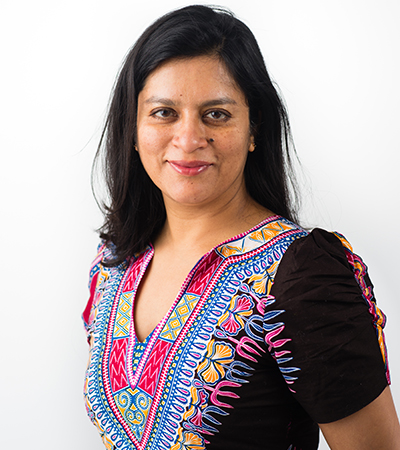
Ananya Jahanara Kabir is Professor of English Literature at King’s College London. Between 2013 and 2018, she directed ‘Modern Moves’: an interdisciplinary project about African-heritage dance in the world, funded by a European Research Council Advanced Grant. In 2022-23, she will hold a British Academy Senior Research Fellowship to complete her book forthcoming from this project, ‘Alegropolitics: Creolizing Connection on the Afromodern Dance Floor’. One of Ananya’s abiding interests is building decolonizing bridges between African and Indian heritage people by studying their exchange of cultures under and despite duress—that she theorises as ‘creolisation’–, and it is this interest that has pulled her towards Geoffrey Holder’s ‘Dougla’. Her new research is on ‘Creole Indias’.
Chapter 5 – Geoffrey Holder’s Dougla, Dreams: Repetition, Rhythm, and the Creole Sacred
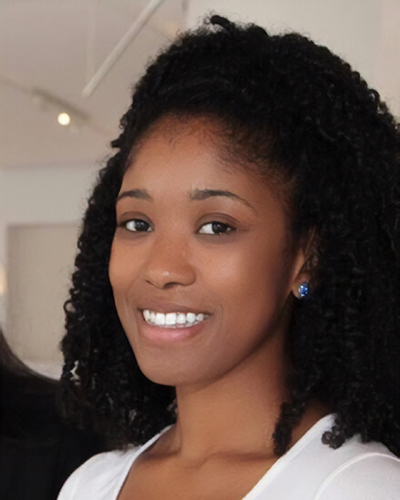
Kaneesha Parsard is assistant professor in the Department of English Language and Literature, affiliate faculty at the Center for the Study of Race, Politics, and Culture and the Center for the Study of Gender and Sexuality, and member of the Committee for Southern Asian Studies at the University of Chicago. Her research concerns legacies of slavery and emancipation in the Caribbean and broader Americas, with an emphasis on how gender and sexuality structure race, labor, and capital. Parsard’s first book project, An Illicit Wage, tracks nineteenth and twentieth century Caribbean cultural repertoires that cast doubt on wage labor as the condition of freedom. Her scholarship can be found in American Quarterly, Small Axe, and the South Atlantic Quarterly.
Chapter 6 – Affair: Eros and Ethnicity in Geoffrey Holder’s Dougla

Alexis White is a graduate student in the History of Art at Bryn Mawr College. She received an MFA from Cornell University in 2020 following a career in garment design and production. During her time at Bryn Mawr, Alexis has worked as a graduate advisor to student researchers in the college’s Special Collections. Her own research is focused on American art in the 19th and early 20th centuries.
Chapter 7 – The Epitome of Black Self-Regard: Vodou modernity and queer movement in Prodigal Prince
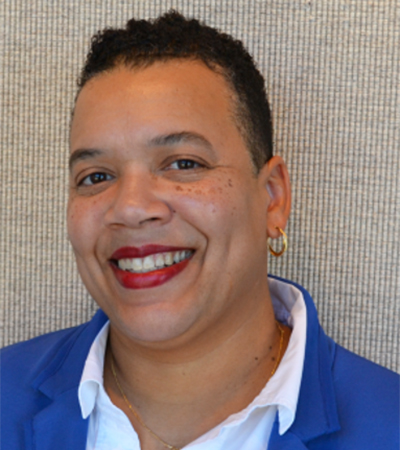
Dr. Mora J. Beauchamp-Byrd is a Teaching Assistant Professor of Africana Studies at Oklahoma State University. An art historian, arts administrator, and curator, she specializes in American Art, with a focus on Modern & Contemporary African American art; art of the African Diaspora; British Art, with an emphasis on the 18th-century graphic narratives of William Hogarth as well as the Black Arts Movement in the UK in the 1980s and 90s; Modern & Contemporary art; Museum & Curatorial studies; and representations of race, class and gender in American comics. She has also taught at Duke University, Spelman College, The University of Tampa, and Xavier University of New Orleans.
Dr. Beauchamp-Byrd has organized numerous exhibitions including Transforming the Crown: African, Asian and Caribbean Artists in Britain, 1966-1996; Picturing Creole New Orleans: The Photographs of Arthur P. Bedou; The Worldview of Katherine Dunham, and Little Nemo’s Progress: Animation and Contemporary Art. She is currently completing a manuscript focused on the portraiture of the New Orleans-born photographer Arthur P. Bedou (1882-1966). Since 2020, she has been a member of the Board of Directors of the College Art Association (CAA), where she currently serves on the Executive Committee as Vice President for Publications.
Chapter 8 – It Almost Didn’t Happen: Geoffrey Holder, Black Broadway and The Wiz
Chapter 12 – Manicured Blackness and White Space: Geoffrey Holder, Black Masculinity and New York School Ad Campaigns

Lisa Jo Sagolla is the author of The Girl Who Fell Down: A Biography of Joan McCracken and Rock ‘n’ Roll Dances of the 1950s. She has written hundreds of reviews and arts features for Back Stage, American Theatre, Playbill, Film Journal International, Dance Teacher, Pointe, The Kansas City Star, Bucks County Herald, U.S. 1/Princeton Info, The Dance Enthusiast, castalbumreviews.com and BistroAwards.com. Her essays, journal articles, and encyclopedia entries on dance and musical theatre appear in scholarly publications, including Routledge Handbook to the Culture and Media of the Americas, American National Biography, The St. James Encyclopedia of Popular Culture, Frank Sinatra: The Man, the Music, and the Legend, The Italian-American Experience: An Encyclopedia, Dance: Current Selected Research, and International Dictionary of Modern Dance. She has choreographed more than 75 musicals for Off-Broadway, regional, summer stock, and university theatres, has worked as an arts education consultant, and has taught at Columbia University, Rutgers University, New York University, Marymount Manhattan College, Dance Theatre of Harlem, and 92nd Street Y. She earned an Ed.D. in Art Education and an M.A. in Dance Education from Columbia University’s Teachers College, and a B.A. in Music Education from the College of William and Mary.
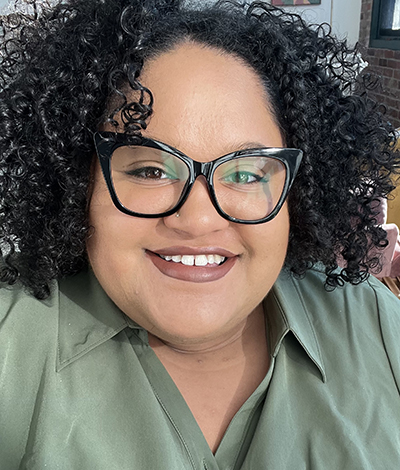
Alexandra Thomas is completing her PhD in African American Studies and History of Art with a certificate in Women’s, Gender, and Sexuality Studies at Yale University. Her dissertation, “Afrekete’s Touch: Black Queer Feminist Errantry and Global African Art” explores the transnational and transmedia wandering of late modern and contemporary Black women artists.
In addition, she is curating the upcoming exhibition, “Homecoming: Kinfulness and Domesticity in Global African Art” at Dartmouth College’s Hood Museum of Art. Alexandra has taught African and African diaspora art history courses at several institutions, including Fairfield University, UMass Amherst, and Yale School of Art.
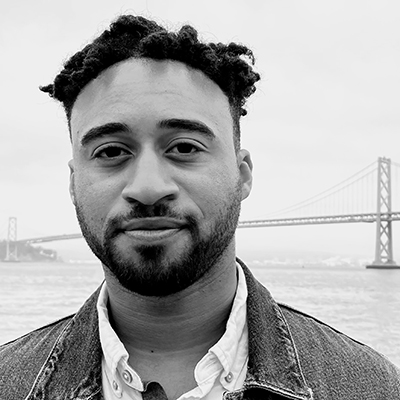
Luke Williams is a scholar, artist, organizer, and critic of twentieth and twenty-first century Black performance and visual cultures. His work, which spans embodiment, portraiture, racial capitalism, Afrofuturism, and the aesthetics of the Black radical imagination, focuses on Black Diasporic art in the Americas and broader Atlantic world. Luke is a PhD candidate in Modern Thought & Literature at Stanford University. His dissertation, In the Black: Figures of Racial Capitalism examines the practices of three emerging Black artists in the California Bay Area as they navigate racial capitalism in the art market. Currently a DARE fellow at Stanford, he also recently held fellowships for the Committee of Black Performing Arts at Stanford and the Jefferson Scholarship at the University of Virginia.

La’Toya Princess Jackson is songwriter, choreographer, producer, performing artist, dance and music researcher, and historian on African American performance. She is a graduate of Clark Atlanta University and Harvard University. With a focus in Black performance studies, her specialized research is on Blacks in ballet, the Black ballet aesthetic, and Black female identity in contemporary music and popular culture. Intersecting studies in the Harvard Dance Program, the Department of Music, and the Theater, Dance, Media department at Harvard, her interdisciplinary focus includes the study of music, dance, and performance. As a graduate student at Harvard, she engaged in performance research under the direction of senior faculty in the Theater, Dance, Media department. She wrote her thesis on the history of classical Black ballet companies in the United States entitled Black Swans Shattering the Glass Ceiling: A Historical Perspective on the Evolution of Historically Black Ballet Companies from Katherine Dunham to Arthur Mitchell. She also presented a critical study on Black female identity and misogynoir in popular music and culture in which she researched the musicological impact of Black female artists in contemporary pop culture. She graduated from Harvard University in 2019 with a Masters Of Liberal Arts degree in Dramatic Arts from the Harvard Extension School. She trained in classical ballet at Ballethnic Dance Company and has worked as a professional in the ballet field for Boston Ballet and Atlanta Ballet. She has also operated ballet outreach programs in the Boys and Girls Club of Metro Atlanta and Boston. She is the writer, producer and creator of the Vanity Lane franchise, an original fairytale which includes an original ballet production, children’s books, ballet workshops, music and merchandise. The full-length ballet debuted at Harvard University in 2018. She has presented her research as for Memoirs of Blacks in Ballet at the annual MOBBallet Symposium and for several boards of major ballet companies.
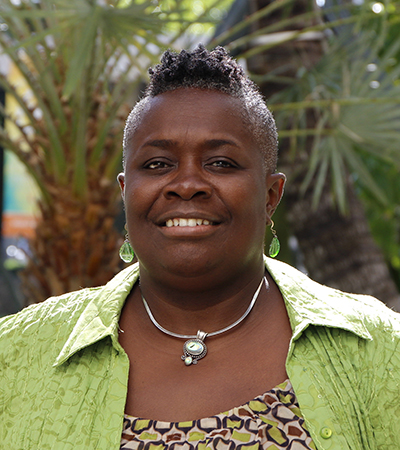
Patricia J. Saunders is an Associate Professor of English at the University of Miami, Coral Gables where she is the Co-Editor of Anthurium: A Caribbean Studies Journal. She is the author of Alien-Nation and Repatriation: Translating Identity in Anglophone Caribbean Literature (2007) and co-editor of Music. Memory. Resistance: Calypso and the Caribbean Literary Imagination (2007). Her work has appeared in journals such as: Plantation Society in the Americas, Small Axe, Transforming Anthropology, The Journal of West Indian Literature and recently, Feminist Studies. Her second book, Buyers Beware: Epistemologies of Consumption in Caribbean Popular Culture, examines a range of contemporary Caribbean popular cultural modes of expression to argue that the bonds between consumption and citizenship in the region are stronger now more than ever despite higher rates of unemployment and socioeconomic inequity. Buyers Beware was published in 2022 with Rutgers University Press.
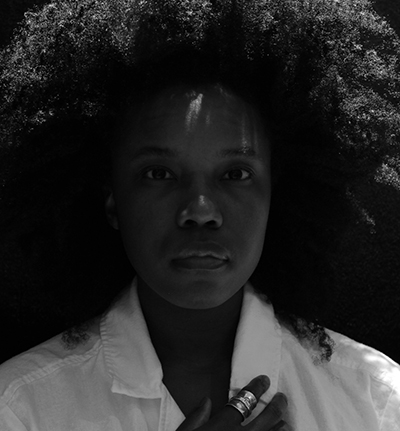
Anicka Austin is a choreographer and archivist based in Atlanta, Georgia. She attended the University of North Carolina at Chapel Hill with a Carolina Academic Library Associates fellowship, graduating in May 2020 with a Master of Science in Library Science. She currently works as visiting archivist for the Geoffrey Holder and Carmen de Lavallade papers at Emory University’s Stuart A. Rose Manuscript, Archives and Rare Book Library. Her focus on embodied archives and the tension between ephemerality and documentation grew from creative process as a 2017-2018 WonderRoot Hughley Fellow. Durational performance created during the Hughley fellowship was guided by the accumulation of materials used for coping into a temporary archive at the Museum of Contemporary Art of Georgia.
Her choreographic work has been presented by Elevate Atlanta, The Lucky Penny and Fulton County Arts and Culture and exhibited at Gallery 72, the Zuckerman Museum of Art’s Fine Arts Gallery, and the Southeastern Center for Contemporary Art. As artist-researcher, she presented written scholarship and choreography on the role of creative process in social justice movements at Critical Junctures: The Work of Art at Emory University in 2017.
Anicka was an Ansley Park Distinguished Fellow at the Hambidge Center for Creative Arts and Sciences in 2017 and a 2015-2018 Lucky Penny Work Room resident artist. Most recently, she has written on embodied ways of knowing through site-specific performance in Atlanta’s public spaces as the 2021-2022 Art on the Atlanta Beltline Scholar-in-Residence.
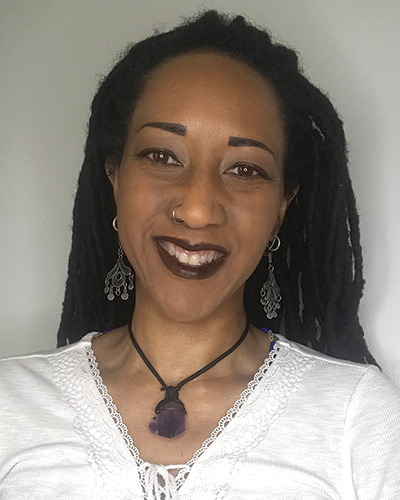
Indira Bailey, Ph.D., is an Assistant Professor of Art Education at Claflin University. She received a BFA in Communication Design from Pratt Institute, a MA in Educational Leadership and Supervision from Kean University, and a dual-title doctorate in Art Education and Women’s, Gender, & Sexuality Studies from The Pennsylvania State University. Bailey has over 20 years of teaching experience in the K-12 sector, community art, museum education, and prison art programs. She is the recipient of the highly acclaimed Elliot Eisner Doctoral Research Award by the National Art Education Association. Bailey is a recipient of several Fulbright scholarships to Morocco, Japan, and South Africa. Her research specializes in the diversity of K-12 teaching resources, curriculum development, anti-racism and gender inequalities, black art visuality, and the underrepresentation of BIPOC artists and art educators. She draws on Black feminist thought, critical race theory, outsider-within positionality, and social justice theory to create an inclusive learning environment. Bailey is the co-editor of the upcoming book BIPOC Alliances: Building Communities and Curricula. She is a professional artist and curator.

Dario Calmese is an American visual artist and design theorist. His work interrogates the mechanisms of cultural production and the ways in which image, environment and technology shape the lived experience. Working across the fields of photography, design, fashion, and art, his practice highlights the ways we come to know ourselves both collectively and individually.
In 2020, Dario Calmese made history as the first-ever Black photographer to shoot a cover for Vanity Fair — in its 106-year existence — with his portrait of Oscar-winning actress Viola Davis. That same year, Calmese launched The Institute of Black Imagination (IBI), a design start-up that works to preserve, integrate, and cultivate the Black imagination through innovative and interactive experiences. IBI’s portfolio includes a widely-acclaimed podcast, a powerful online archive of Black creativity, and a forthcoming location at the Oculus World Trade Center, all of which tap into the “Pool of Black Genius” to share the visions of the modern iconoclasts taking the reins on cultural thought and innovation.
Currently a Loeb Fellow at the Harvard Graduate School of Design, Calmese serves on the global advisory board for Estee Lauder Companies and is a professor at The New School’s Parsons School of Design in New York City. He is also an NYC Urban Design Forum Fellow, show director for the fashion brand Pyer Moss, and collaborated with Adobe Lightroom to design presets specifically for people of color.
Chapter 16 – Geoffrey Holder’s Gift to The Institute of Black Imagination